#william marshal
Text
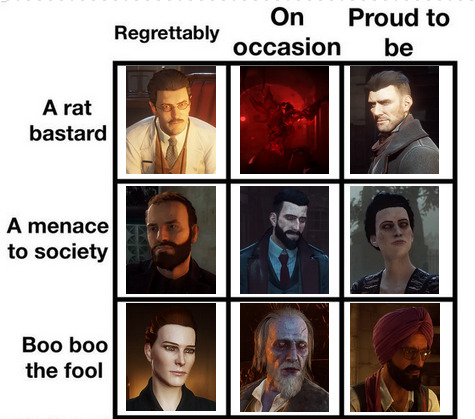
there's something deeply wrong with all of them.
bonus

#vampyr#vampyr game#vampyr 2018#vampyr dontnod#jonathan reid#edgar swansea#geoffrey mccullum#sean hampton#mary reid#elisabeth ashbury#william marshal#usher talltree#myrddin wyltt
110 notes
·
View notes
Video
youtube
William Marshal | The Greatest Knight
23 notes
·
View notes
Text
Isabel de Clare 4th Countess of Pembroke (1172-1220 AD). Anglo-Irish women of the nobility in profile...
Isabel de Clare’s life is largely known in detail for her proximity to people in her life during the late 12th & early 13th centuries of Medieval England. Her parents and ancestors were of noble & royal extraction. Her husband rose through the ranks from son of a relatively minor noble to being the man regarded as the best knight and most trustworthy nobleman in all of the Angevin Empire and a powerful statesman who ruled in England in all but name for a brief period. In death he was lionized as the “greatest knight who had lived” and their children would either become nobles & warriors in 13th century England themselves or marry into other noble families of note.
All of this overlooks just how important, strong and capable Isabel was of her own merit. Something her husband and indeed Anglo-Norman law at the time recognized. Despite its male dominance, there were women capable of being major power players in the ranks of nobility & royalty and Isabel played a contribution to that. Her life offers us a unique glimpse into a noble woman’s life during the High Middle Ages in Western Europe.
Royal Roots, Birth & Early Life:
-Isabel de Clare was born circa 1172 AD, somewhere in Leinster (southeastern), Ireland. From the start she was a symbolic & physical bridge between two cultures. She was the result of a political but dutiful marriage, and her physical being would be of crucial importance in later years.
-Her father was Richard FitzGilbert, also known as Richard de Clare, 2nd Earl of Pembroke (1130-1176). Richard would be best known to history by his nickname Strongbow. He was an Anglo-Norman nobleman of the De Clare family. The De Clare or Clare family originated in Normandy and came to England where they accompanied William the Conqueror, Duke of Normandy who would become the first Norman King of England.
-The first Richard FitzGilbert (1035-1090) was a companion of Duke William and distant kinsman. They both shared a common ancestor in Richard I of Normandy (932-996), Count of Rouen & Duke of Normandy. The name De Clare was from the Norman French for a place name, to be from or “of” said location. As a reward for being companion to Duke William in the Norman Conquest of England. Richard FitzGilbert like other Norman nobles was granted landholdings in England, becoming the new English nobility which replaced the Anglo-Saxons of old. Richard’s particular land holding was in centered in the town of Clare in Suffolk England which made him the first Lord of Clare. He also gained territory in Tonbridge in Kent, England.
-Over the generations the family expanded its holdings in England and in the Welsh Marches, Anglo-Norman controlled portions of southern Wales. Strongbow’s father Gilbert de Clare (1100-1148) became 1st Earl of Pembroke under King Stephen of England, gaining control of important parts of the Welsh Marches, including the Pembroke peninsula in southwest Wales. He also held Striguil in southeastern Wales on the River Wye, forming the strategic border between England & Wales.
-Gilbert de Clare was married to Isabel Beaumont, a former mistress of King Henry I of England & daughter of Robert de Beaumont, 1st Earl of Leicester & his wife Elizabeth de Vermandois. Elizabeth was a French noblewoman was the paternal granddaughter of French King Henry I (1008-1060) of the House of Capet. While her maternal grandfather Herbert IV, Count of Vermandois (1028-1080) was a descendant of Charlemagne and the Carolingian dynasty of Franks. Also, by virtue of Henry I’ of France’s marriage to Princess Anne of Kiev, Strongbow and subsequently Isabel de Clare were direct descendants of the Kievan Rus’s royal ruling House of Rurik which ruled Medieval Ukraine & Russia. Also confirmed among their ancestors from this line were Swedish royalty, Polish tribal royalty & possibly Byzantine Greek royalty, if the debated connections regarding Anne of Kiev’s purported paternal grandmother (Anna Porphyrogenita) are indeed true.
-Isabel de Clare’s mother and the wife of Strongbow was Aoife MacMurrough of Eva of Leinster (1145-1188) an Irish princess who was daughter of Dermot MacMurrough, King of Leinster. Ireland at the time was not ruled by one king but was instead made up of several feudal petty kingdoms, Leinster being one of them located in the southeast of the country, a land of rivers, hills and the famed Wicklow Mountains. Aoife’s and subsequently Isabel’s ancestry in Ireland went back to various Irish petty kings & even the vaunted High Kings of Ireland, who ruled as a somewhat symbolic overlord of the other petty kings. This included her paternal ancestor through Brian Boru, High King of Ireland & King of Munster and founder of the O’Brien dynasty who defeated the Vikings at their settlement in Dublin in 1014, taking the area back for the Gaelic natives of Ireland after years of Viking rule. Though Brian Boru died in the process.
-Isabel de Clare’s parents came together in the 1170′s following a power struggle in Ireland between her maternal grandfather Dermot MacMurrough & then High King of Ireland, Rory O’Connor who worried that Dermot would become too powerful as King of Leinster, so he launched an invasion of Leinster, this forced Dermot off his throne and into exile in 1166.
-Dermot’s exile took him to the court of Henry II, King of England & Duke of Normandy who was in France at the time, trying to hold together his many French possessions (Normandy, Brittany, Aquitaine, Anjou etc.) which made up his Angevin Empire. Henry would not personally partake in restoring Dermot to the throne in Ireland, but he did authorize Dermot to negotiate and make mercenary use of some of his Anglo-Norman nobility and their knightly retinues. Strongbow would be one of these Norman nobles Dermot would negotiate with.
-Strongbow promised to assist Dermot in the recapture of his throne, in exchange for Aoife’s hand in marriage and kingship of Leinster upon Dermot’s death, co-ruling with Aoife to give it air of legitimacy among the native Irish. The Norman invasion of Ireland commenced in small waves as early as 1169 with Strongbow himself arriving in 1170 where his Anglo-Norman forces, some 200 mounted knights and 1,000-foot soldiers teamed with earlier Norman war parties from the prior year, they took the port city of Waterford, once a Viking a stronghold. Here Aoife & Strongbow were married, uniting the Irish royalty with Anglo-Norman nobility in a political manner.
-Children would of course cement this marriage with the birth of Isabel probably in 1172 and her brother Gilbert.
-Dermot’s gamble paid off, his Norman mercenaries overwhelmed the forces loyal to High King Rory O’Connor. The Gaelic Irish military in terms of arms & armor were no match for the Anglo-Normans who sported the most high-quality weapons and armor of their day in Western Europe. Dermot was once again agreed to be King of Leinster in agreement with O’Connor. However, his deals with his new son-in-law Strongbow & the other Anglo-Normans unintentionally and unbeknown to them opened the door to the start of England’s several centuries of involvement in Ireland...
-Dermot would die in 1171 shortly after the retaking of the kingdom, leaving his son and son-in-law (Strongbow) to claim kingship of Leinster. His son and Aoife’s brother claimed it under traditional Brehon law while his deal with Strongbow left it as part of the dowry for marriage.
-Meanwhile. Henry II of England was concerned about his Anglo-Norman nobles over in Ireland. Strongbow in particular had through marriage and acquisition of lands, begun a private colonization of Ireland. Other nobles who took part in Dermot’s operation did so too. This resulted in Henry and Strongbow making a deal, in exchange for keeping Leinster and the restoration of Strongbow’s English, Welsh & French landholdings, he would surrender the ports of Wexford, Waterford & Dublin to royal authority directly. He’d also be required to assist Henry on campaign in France against rebels. He was made in title by Henry II, Lord of Leinster & Justiciar of Ireland (chief justice). Henry II arrived in Ireland in late 1172 for a six month stay where royal troops directly loyal to him took over the key cities of Wexford, Waterford & Dublin from the earlier Anglo-Norman mercenaries. All the Anglo-Norman nobles who gained land in Ireland during the initial invasion were forced to pledge fealty to Henry II as Lord of Ireland in exchange for their right to keep their newly colonized lands. Likewise, the native Gaelic kings were to pledge fealty to Henry II as their feudal overlord, essentially ending the now meaningless institution of High King of Ireland. Waves of Anglo-Norman, Welsh, & Flemish colonists began to settle and establish new English towns in Ireland. Some established relations with the Gaelic Irish, intermarrying, becoming a new cultural group which would expand, ebb and flow over the centuries, the Anglo-Irish. Thus began a fusion of Anglo-Norman architecture, warfare, language and with a gradual cultural assimilation of Gaelic customs that began to blur the differences overtime until the early Anglo-Normans became just accepted as Irish. Nevertheless, politically the longer lasting implications of England’s occupation of Ireland had begun.
-Isabel de Clare was born into this new political realty, her maternal ancestral homeland permanently transformed within a few years due to her maternal grandfather’s personal struggle to regain power in his homebase. None of the the participants, including her parents & grandfather had the slightest notion of the longer-term implications of their decisions. Isabel & her brother were, nevertheless, the flesh and blood realty of this new political & cultural fusion. Meant in part as political bridges between two worlds.
-Strongbow intended for his son Gilbert to inherit Leinster and the various holdings in Wales, England and Normandy. His own death came about in 1176 following an infection of the leg. He was buried in Dublin, with his tomb & effigy still found Christ Church Dublin. Aoife took charge of her children’s upbringing hoping to ensure their inheritance. She was by many accounts fierce in this regard, she was also seemingly well-educated for anybody in that time period but especially a woman, a trait she passed on to Isabel. She is also said to have led Anglo-Norman & Irish loyalist troops into battle against those who tried to take Leinster from her, she earned the nickname Red Eva.
-Gilbert de Clare, died as a teenager around 1185. Thus, all the inheritance remained with his mother Aoife and would by right of Anglo-Norman law pass on to his nearest relative, his sister Isabel and any man she would marry.
-Aoife died in 1188 by some accounts, this left the teenage Isabel orphaned without and without her brother. She was, nevertheless, rightful heir to Leinster, the castles in Wales & England that had belonged to her father and paternal grandfather (Gilbert, 1st Earl of Pembroke). She was the 4th Countess of Pembroke in this line after her brother’s brief tenure. Isabel, became a royal ward of Henry II personally. Meaning he would ensure the safekeeping of her legal inheritance and person. He entrusted this to Ranulf of Glanville, Justiciar of England. She was therefore kept in London for her safekeeping.
-In practical terms this royal wardship was essentially a foster home for orphaned nobility until the king could marry them off to some other noble. Sometimes, other nobles would be entrusted as their personal guardian and be tasked with arranging the marriage of the ward to another noble, sometimes to their guardian’s child or even the guardian themself for personal gain. This would of course require the king’s blessing.
-Isabel was described as beautiful, kind & intelligent “the good, the wise and courteous lady of high degree.” She was among the wealthiest heiresses in the Angevin Empire (Henry II’s personal empire which through conquest, inheritance and diplomacy included all of England, parts of Wales, Ireland and most of Northern & Western France). She was well educated like her mother and could speak her father’s language of French, the courtly language of the English royalty and the Anglo-Norman nobility at the time. She could also speak her mother’s native Irish (Gaelic) & Latin, the language of clergy, diplomacy and government bureaucracy. This coupled with her bloodlines would be of tremendous political import, meaning she could navigate the Irish and Anglo-Norman cultures she was born of. Rather than her education in language, courtly manners, warfare, diplomacy and politics being perceived as a threat to any husband, it would have likely been seen as a great asset.
-Her hand in marriage was promised by Henry II, to one William Marshal in 1189. Marshal was himself an Anglo-Norman noble born and raised in England around 1147. He was the son of a relatively minor noble in England’s West Country with his mother coming from a more distinct Norman family. He came of age through training as a knight with his mother’s relative in Normandy, enduring a six-year apprenticeship in knightly warfare, court etiquette & the arts. He saw some combat but was assigned to the personal service of England’s Queen Eleanor of Aquitaine and then the service of her and Henry II’s son, Henry the Younger. They bonded especially in the late 1170′s by becoming famous knights on the European knightly tournament circuit that was just blossoming at the time. Marshal became perhaps the most renowned tournament knight of all, capturing or unhorsing some 500 knights. Henry the Younger would eventually die after Marshal served him for over a decade loyally.
-Marshal then found himself in Henry II’s personal service and during a war against the King of France who was briefly joined by Henry II’s son and heir Richard where he personally unhorsed Richard with a lance, killing the horse but sparing the prince. Supposedly, the only man to do so. After Henry II’s death, Richard rose to the throne of England & Normandy. He was preparing to go on Crusade to the Middle East and liberate Jerusalem from Muslim rule. He would in time be known as Richard the Lionheart.
-Despite Marshal’s recent opposition with King Richard, the new monarch kept Marshal in his service. He also fulfilled his father’s promise to wed Isabel de Clare to William Marshal. This would make Marshal not only a wealthy and increasingly influential knight but by right of marriage make him now one of the wealthiest landowners & nobles in the Angevin Empire.
Marriage, until death do you part;
-William Marshal & Isabel de Clare were married in August 1189 in London. There was an age difference, she was not quite 18 and he was in is early 40′s. Despite the political nature of the marriage, it appears to have been a genuinely happy one by all accounts. Neither party appears to have been unfaithful to one another. The written records show a great mutual appreciation for one another and produced 10 children, 5 sons and 5 daughters over the next several decades.
-Marshal was technically by right of marriage, Earl of Pembroke but he would not officially acquire the title in his own name until 1199, a decade after his marriage. Nevertheless, he was overlord of Leinster and Striguil and set about making improvements to the castles both he had acquired in England & France for loyal service to the monarchs but his marital gains in Wales & Ireland.
-For the first decade of marriage, William was in service to Richard the Lionheart, particularly when he was gone on Crusade, he stayed behind as a member of the ruling council. This kept him in England, Wales & France mostly, with little attention to affairs in Ireland. Isabel for her part focused on raising a family and supporting her husband as he navigated politics. Though his wartime commitments to defending England from rebels & the French throne often kept them separated. Isabel, appears to have been like her mother before devoted to ensuring the cultured learning of her children.
-Affairs in her native Ireland wouldn’t be pressing for the Marshal family until around the year 1200, during the reign of Henry II’s youngest son with Eleanor of Aquitaine, John. John became king after the death of his eldest brother Richard who had returned from years in the Crusades and then a captive in Germany from a rival monarch, found himself campaigning against Philip II of France (his father’s rival) to regain territory that had been lost under John’s regency of throne. John was eventually back in Richard’s good graces when the Lionheart died of infection from a crossbow wound fired by a rebel soldier in southern France where Richard was campaigning to suppress a revolt.
-John was now King of England and had a reputation for being paranoid, highly emotional and making rash decisions, making him more unpredictable than his older brothers and father.
-Marshal found himself both in John’s good graces and bad graces at various times over the years. He and Isabel were turning to press their rightful rule in Leinster in the early 1200′s despite John’s warnings he not to do so. John like his father Henry II had been concerned about Strongbow now worried Marshal and Isabel would be too powerful and independent in Ireland. Indeed, in the two decades since the Norman invasion of Ireland, the Anglo-Norman nobility who settled there had become accustomed to their own relative autonomy. Loyalty to the king was in name but in practice, so long as they didn’t rebel against the king, they were basically free to do as they please. John’s predecessors did little to enforce this and initially John was more concerned about England & France.
-Marshal & Isabel helped develop the town of New Ross in Leinster, an English town separate from the Gaelic towns nearby, it was peopled with English & Welsh colonists, many of whom were part of the Marshal family retinue and to whom they owed their feudal allegiance. The castles of Kilkenny, Trim & others were developed and expanded by Marshal & Isabel.
-Meanwhile, Marshal earned John’s ire for having paid homage to Philip II of France in exchange for retention of Norman lands after the French kicked John’s English armies out of Normandy, forever losing his ancestral duchy of Normandy to France.
-Concerned of Marshal’s power in Ireland and anger over his dueling homages to John in England and Philip in France. John organized for Marshal to come pay homage in England where he was duly placed under house arrest at the royal court. Meanwhile his own Justiciar in Ireland, Meiler Fitzhenry who had his own ambitions on Leinster invaded using his own Irish & Anglo-Norman forces with John’s blessing. John sought to teach Marshal a lesson and increase personal control over Ireland by having a Norman noble with more loyalty. It also worked in Fitzhenry’s favor.
-Marshal himself was considered fair if not especially popular among the Anglo-Normans already settled in Leinster under his rule. While the native Gaels were less than enthused by him or any other Anglo-Norman lord. Isabel, however, appears to have been the critical element & saving grace for Marshal. Given her ancestry including the native Irish rulers of Leinster and the Anglo-Norman new elite, her command of language & diplomacy appears to have held things together while this Anglo-Norman civil war with the king’s blessing raged in Ireland.
-in 1208 Fitzhenry’s men besieged Isabel (who was pregnant) and the Anglo-Normans who were loyal to Marshal all while Marshal himself and his sons remained personal hostages of King John. Only thanks to an alliance between Marshal’s & Isabel Anglo-Norman loyalists with another rival of Fitzhenry, Hugh de Lacy (1176-1242) Anglo-Norman noble who was first Earl of Ulster did the war come to an end in Marshal & Isabel’s favor. Isabel is said to have helped direct the defense of her castles under siege while de Lacy’s men came to their relief, defeating and capturing the men John had sent to assist Fitzhenry.
-Fitzhenry remained a noble in Ireland but he was removed as Justiciar. Marshal was released by John, and he was allowed to reunite with Isabel.
-Isabel’s day to day to involvement in the civil war is hard to gauge but almost certainly if not the military matters, the diplomatic ones she learned from her Irish princess mother, along with her symbolic blood ties to the Irish & Anglo-Norman nobility of Leinster still held important sway. As Marshal had said prior to his departure to his custody in England, all he had emanates from her. This was mostly true in a political and legal sense, but he appears to have meant it in a romantic sense since she was his faithful wife & mother of his children, the vessel to his dynastic future.
-In the coming years, Isabel & Marshal looked to marrying off their children to important Anglo-Norman nobility. Though successful in this regard and Marshal & Isabel have thousands if not millions of descendants today, none of their sons would bring about descendants meaning, their holdings in Ireland, Wales and England would transfer to other families since their daughters were married off into other noble families and hence the Marshal dynasty was short lived-in terms of male direct descendants. All five daughters Maud, Isabel, Joan, Eva & Sibyl all had children that lived and went onto have descendants that live into the modern era, including members of the British royal family today as well as numerous people in America and elsewhere due to colonial descendants from English nobility.
-Marshal found himself back in John’s good favor and counselled him during the rough times of the First Baron’s Rebellion (1215-1217). He also helped guide John to signing the famed Magna Carta, meant as a peace treaty to ensure certain royal guarantees for the rebellious nobility. Making Marshal one of the Magna Carta “signers”, though the peace was broken shortly thereafter, and John died of illness during rebellion. To make matters worse England’s civil war between nobles revolting against John’s excesses and those loyal to him, including Marshal now attracted the attention of the French king Philip II and his son Louis. The rebel barons now swore fealty to Louis and asked he take over as King of England. Marshal had been made guardian of John’s son 9-year son who was crowned Henry III, making him the 4th crowned King of England that Marshal would serve. Marshal was styled as “Guardian of the Realm” and swore to defending England and its rightful king from the predations of the rebel barons and the French pretender.
-As regent he was now the head of the country in practical matters, yet he was also 70 years old. Marshal would help Henry III and England’s royalist forces when the war when at age 70 and donning knight’s armor one last time he would lead a royalist force to defeat a combined Anglo (rebel)-French force in the Battle of Lincoln in May 1217. This along with the English naval victory over France at Sandwich ended the war in the royalist favor. Henry III was recognized by France at the rightful King of England and the rebels would be forgiven in exchange.
-Marshal won the war for England but his old age was catching up with him. He now set about as Regent of England on behalf of Henry III to try and restore the treasury which was drained under John. He also reissued updated versions of Magna Carta, later cited by historians as a cornerstone moment in the gradual expanding of human rights and democracy, though the original document was narrow in scope and intended for the nobility and the preservation of their rights against royal abuse. It would influence English common law and American Constitutional law in centuries to come.
-From 1217-1219 Marshal was the de-facto the ruler of England, he wasn’t always successful, but he did ensure some measure of peace and lay a foundation that Henry III’s other regents and the king himself could later build upon.
-Isabel remained faithful to the very when Marshal died at home near Reading England in May 1219. She was said to have wept uncontrollably at his passing and could not walk during his funeral procession to London where he was buried in Temple Church.
-Nevertheless, evidence shows that despite her husband’s passing she immediately set about ensuring inheritance was due. Writing the other regents that her lands in Ireland, Wales (minus Pembroke which went to their eldest son) and England were duly granted in her name. She also negotiated with the French king to ensure inheritance of her Norman lands. She even got William Marshal II, their eldest son the hand in marriage to Henry III’s younger sister Princess Eleanor, though this marriage would produce no heirs.
-Isabel’s son William Marshal II was effective as agent managing her various estates, but illness caught up with her in March 1220 and she died in Wales ten months after her husband’s death. She was buried Tintern Abbey near Striguil Castle, now Chepstow Castle which had belonged her father Strongbow and his father before him. Her grave is there to this day alongside her mother Aoife of Leinster. Though the abbey which the De Clare & Marshal families patroned is now in ruin, the grave markers are located on the ground.
-So passed a woman of high birth within the High Middle Ages of Western Europe. She was born of two different cultures and served as a living bridge immersed in the customs of both. As a result, she was given a unique and rich in-depth education unusual for anybody for the times but especially someone of her sex. Her life is mostly known for a seemingly peripheral role in relation to her family and acquaintances of great political importance but the evidence we have suggests she was regarded by especially her family and husband in particular as an absolutely vital and strong character in the events of the time. She played a part in shaping the history of nations, by dint of her birth and by her cultured and determined character.
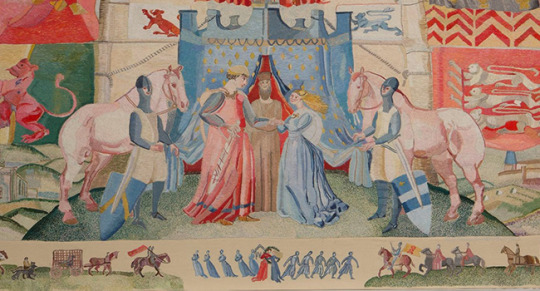

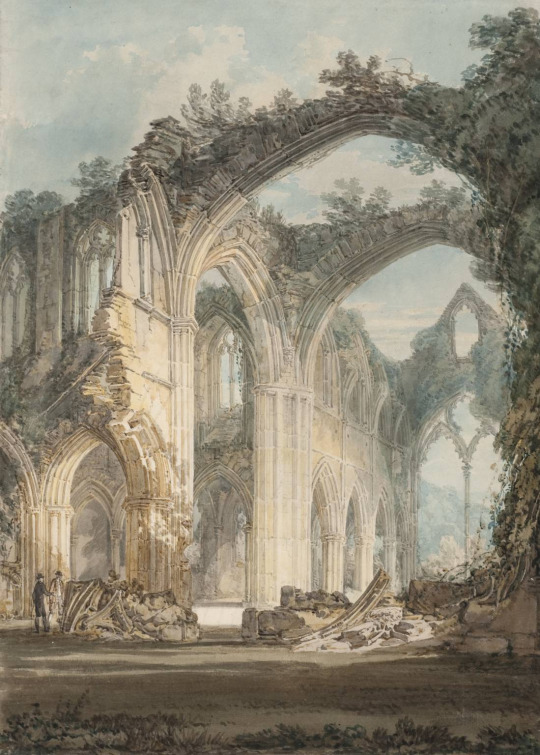


#middle ages#england#france#anglo-norman#medieval#William Marshal#knighthood#chivalry#ireland#leinster#castles#normans#nomandy#de clare#strongbow#wales#chepstow castle#princesses#countess#brehon law#eva of leinster#high middle ages#henry ii#richard the lionheart
11 notes
·
View notes
Text
A Place Beyond Courage by Elizabeth Chadwick - a Book Review
This is a book I picked up for a very specific reason. My father has become thoroughly enthralled, obsessed almost, with the subject of ancestry. He’s on a mission to trace nearly every line of our family tree as far as it will go, and it turns out, the subject of this novel is my Great however-so-many it may be Grandpappy. Dad acquired Chadwick’s book series about William Marshal and now I’m…
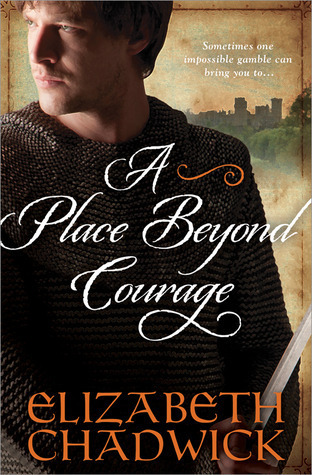
View On WordPress
0 notes
Text
MAUDLIN CASTLE SEPTEMBER 2022
Maudlin Castle is a tower house which formed part of a medieval hospital and National Monument located in Kilkenny, Ireland
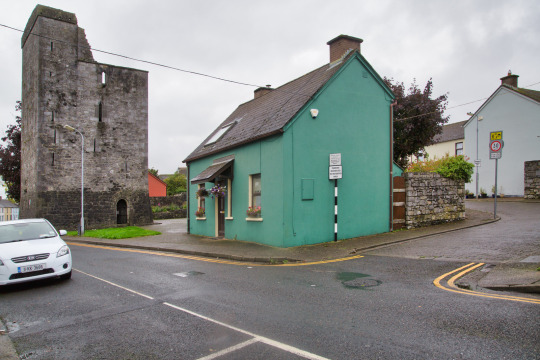
View On WordPress
#1st Earl of Pembroke#5D MKIII#canon#Fotonique#historic#Hospital of St. Mary Magdalene#Infomatique#Ireland#leprosy#Mary Magdalene#Maudlin Castle#maudlin street#National Monument#Sigma 24-105mm Lend#William Marshal#William Murphy
0 notes
Text
Still not over the fact they got Lenne Hardt, a legit professional ring announcer, as the announcer for Tekken 8. She goes so fucking hard.
#tekken#tekken 8#kazuya#kazuya mishima#lars alexandersson#marshall law#paul phoenix#jin kazama#nina williams#king#king 2#king ii#jun kazama#ling xiaoyu
497 notes
·
View notes
Text
jrwi characters react to you getting a tapeworm
(original? for jrwi made by @pennydoesstuff )

Gillion: *drawing sword* worry not, y/n, for such evils shall be thwarted with the power of DESTINY

Chip: WOAAHHH can i touch it or is that like disrespectful to your culture

Jay: you wanna know my secret so bad, chip? i was using— y/n you what

Caspian: traitor noises

Lizzie: thats fucking disgusting *eats the tapeworm while making eye contact with ypu*
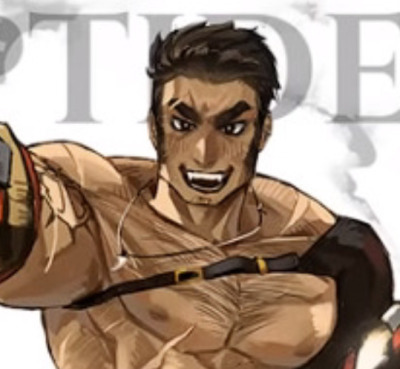
Marshall John: HELL YEAH BROTHER *high fives u so hard the tapeworm falls out
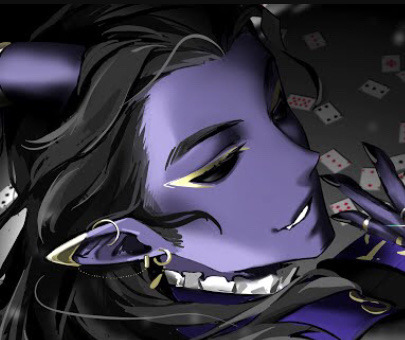
Niklaus: *has tits out* i see
Ava Ferin: dead

Drey Ferin: yknow i had a tapeowrm once too…. In a life long past me by now…..

Old Man Earl: turns it into juice

Ollie: WOAHHH *pokes it*

Goobleck: is the tapeworm
+ bonus

William: yknow sometimes i feel like there are two tapeworms in me. and inside me those two tapeworms are fucking
#sighs.#i know this doesnt follow the original format what with the transparent pngs#but can you really nitpick quality on a fucking tapeworm post#jrwi#just roll with it#jrwi riptide#jrwi pd#gillion tidestrider#jay ferin#chip bastard#lizzie lafayette#caspian jrwi#william wisp#marshall john#oliver teach#goobleck jrwi#old man earl#drey ferin
236 notes
·
View notes
Text

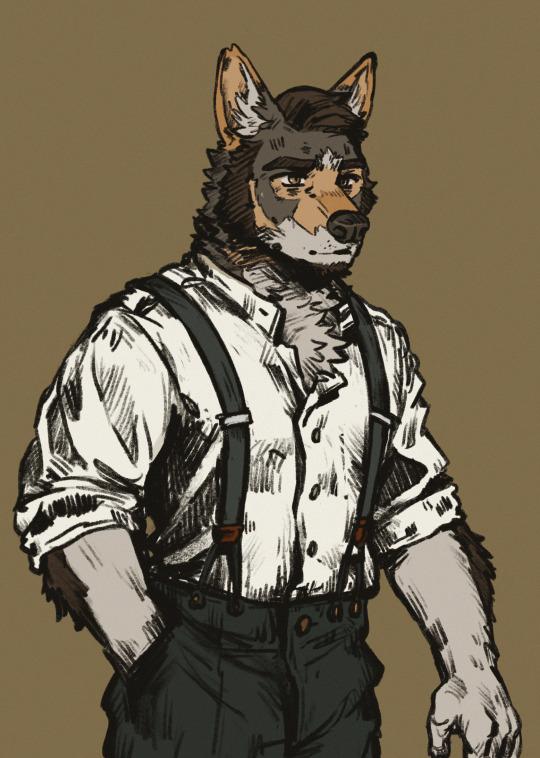
REDESIGNING THE LOOKS: WILLIAM ADLER from THE SMOKE ROOM
I haven’t had the time quite yet to play the visual novel, but I’ve been seeing plenty of fanart of the characters, and I’ve heard that the story takes place in 1915. Redesigned some of the characters with clothes a lil more periodic accurate, starting with William Adler.
Ft. William Adler from the Smoke Room, an Echo Project visual novel
Fanart by DWC Marshal Arts
#furry#anthro#digital art#furry art#dwc marshal arts#illustration#furries#fanart#william adler#the smoke room#echo project
177 notes
·
View notes
Text


Cindy Williams and Penny Marshall in Laverne & Shirley (1975).
110 notes
·
View notes
Text

William Marshall, Gilbert W. Taylor - Psychedelic Ecstasy - Wilshire - 1968
#witches#ecstatics#occult#vintage#psychedelic ecstasy#wilshire books#william marshall#gilbert w. taylor#1968#psychedelia
140 notes
·
View notes
Video
youtube
"Honor and bravery" - Full album
25 notes
·
View notes
Text
We don't talk about how Tekken is a love story much, it's a story about love and desire.
it's about Jun's love for her family, Jun's desire to save Kazuya and Jin and how her love for them ended up saving them both.
Kazuya and Jun's love and desire for one another.
about Hwoarangs desire to be accepted by someone, to have a father figure, friends, his love for his teacher Baek and other things.
Xiaoyu's crush on Jin and her longing/desire for him.
Heihachi's and Kazumi's tragic love
Reina's desire to bring back her father's legacy and her fatherly love for Heihachi
Nina and Anna's complicated Sisterhood
Lee, Lars and Kazuya's complicated Brotherhood
All of Heihachi's kids complicated Siblinghood
Wang and Jinpachi's friendship and desire to change the world to a better place but they both failed to do that at that time
Law's love for his son Forest and his desire to be rich to help him from his accident
it's about conflict, love, family, betrayal, desire, fighting spirit...Tekken is so much more.
#tekken#kazuya mishima#jun kazama#jin kazama#reina mishima#ling xiaoyu#hwoarang#lars alexandersson#lee chaolan#nina williams#anna williams#kazumi mishima#heihachi mishima#jinpachi mishima#wang jinrei#jinrei wang#marshall law#forest law
67 notes
·
View notes
Text
William Marshal, 1st Earl of Pembroke (1146/47-1219). Greatest Knight of the Middle Ages...
If you hear the term Middle Ages or Medieval Era, at least in a European context one visual that might form in the popular imagination is that of the knight. Bedecked in armor, astride a horse, armed with lance, sword & shield prepping for war. While acting in accordance with a code of conduct known as chivalry, one that stereotypically stressed virtues of loyalty, martial prowess, gentlemanly behavior towards others, including in courtship among other virtuous behaviors.
The truth regarding Medieval knighthood is one far more complex when reviewing the individuals who actually embodied it. Knighthood and what it meant to be and even to look like as a knight developed over a long period of time, it was never that static of a concept. Concepts similar to knighthood can be found in many cultures the world over and many predate the popular European concept of knighthood in the Middle Ages. When you consider the Middle Ages was roughly bookended with the fall of the two halves of the Roman Empire. Starting with the fall of the Western Roman Empire to waves of invasions, primarily to Germanic tribes in the 5th Century AD to the fall of the Eastern Roman Empire or Byzantine Empire in the mid 15th Century AD to the Ottoman Empire, you have about 1,000 years of history to cover, alot of time for a concept to take hold and evolve.
I want to focus on one individual said to epitomize our popular concept of the knight, who lived during the period of time where the notion of European knighthood crystalized from its embryonic concepts to the first flowering of our classical understanding of knighthood & chivalry. The individual said embody this most was man born in 12th century England, an Anglo-Norman by the name of William Marshal. In his native Norman French, he would have been Williame il Mareschal...
The Early Days:
-William Marshal was born in England around the year 1147 AD. His exact place of birth isn’t known but his parentage is. He was the younger son of a minor Anglo-Norman noble by the name of John FitzGilbert, AKA John Marshal and Sibyl of Salisbury. Both from Anglo-Norman families that had formed the new nobility of England following the 1066 Norman Conquest initiated by William, Duke of Normandy (William the Conqueror) who became King of England and united the Duchy of Normandy in Northern France with the whole of England.
-The Normans who descended from Vikings from Scandinavia and settled in Northern France in the late 9th & early 10th centuries. They converted to Christianity and adopted the French language and mixed in with the local Frankish, Flemish & Gallic peoples of France. Here they formed their own unique ethnolinguistic & cultural group. One best known for the martial prowess inherited from their paternal Viking origins combined with devout religious fervor & culture from their adopted French homeland.
-With the Norman Conquest of England started in 1066, the Normans replaced the Anglo-Saxon nobility in most instances with soldiers who accompanied Duke William and their families being granted estates of land throughout England, often at the expense of former Anglo-Saxon rulers.
-The Normans changed the ruling elite, architecture & some linguistic influence of French into England but the majority populace remained Anglo-Saxon.
-As time went by the communities remained somewhat segregated but did learn to interact. The Normans and their Anglo-Saxon subjects over the next century expanded into Wales, southern Scotland & eventually Ireland, becoming the first wave of lasting English influence on the Emerald Isle, more on that later.
-William’s eventual moniker and surname of Marshal, came from his father’s position as hereditary royal marshal. It was a position as an official marshal to the Anglo-Norman King & Duke, generally aiding in access within the king’s household. Nevertheless, for John FitzGilbert, it did not bring large estates and the role was relatively minor in importance.
-Only during the period of civil war known as the Anarchy (1138-1153 AD) did John FitzGilbert rise to a level of semi-importance. The Anarchy revolved around succession to the throne of England & Normandy. Henry I, King of England and last son William the Conqueror to rule England & Normandy found his reign from 1100-1135 in a succession crisis at the time of his death. His legitimate son and heir, William Adelin died at age 17 in 1120 during the White Ship accident on November 25th of that year. The ship hosted a large drinking party of royalty & nobility including the Anglo-Norman heir apparent. The ship disembarked from Normandy to cross the English Channel for England when it struck a rock and most of the people aboard drowned including William Adelin.
-William Adelin’s importance was to unite the political elements of England, Normandy & Scotland into one person. His father of Norman extraction and his mother Matilda of Scotland was born to the King of Scotland Malcolm III & the Anglo-Saxon princess Margaret of Wessex, one of the last vestiges of the displaced ruling house of Wessex which had ruled Anglo-Saxon England for over a century prior to the Norman Invasion. With his death these hopes were seriously endangered.
-William Adelin did have a sister Matilda (1102-1167) who married Henry V, Holy Roman Emperor from 1114 until his death in 1125. Matilda then married in 1128 Geoffrey V, Count of Anjou. Anjou like Normandy was a feudal state within Medieval France which was nominally in service to the French king but was effectively independent as the French king could only wield limited power to rein in his nobles at the time.
-Henry I on his death bed made his Anglo-Norman nobles swear to recognize his daughter Matilda as Queen and her successors as the legitimate rulers of England & Normandy. However, the problem of her sex & the fact that she was previously married to the German Emperor meant she appealed to less than some of the nobles. Her opposition came from her cousin and fellow grandchild of William the Conqueror, Stephen of Blois.
-Stephen, with backing from the English Church had himself crowned King of England on December 22, 1135, within days of Henry I’s death. Stephen had been one of the nobles who previously gave oath this uncle that would recognize Matilda as Queen. Despite his usurpation of the throne, it was didn’t immediately cause an outbreak of war.
-Stephen first dealt with troubles from Scotland and then returned to southern England to issue a series of reforms from the times of Henry I, reforms which were intended to shore up support for his rule by addressing so called royal abuses of noble privilege during the reign of Henry I. He then dealt with rebellion in Wales and gradually trouble from his cousin Matilda & her husband Geoffrey of Anjou who invaded Normandy.
-In 1138, Robert, Earl of Gloucester who was half-brother of Matilda & son of Henry I through a mistress rebelled against Stephen and this pushed England itself into civil war as various nobles in Normandy & England took up us the causes of Matilda & Stephen.
-In this environment John FitzGilbert who initially professed loyalty to Stephen and was granted castles in Wiltshire County and elsewhere as a result. In 1141 he switched his loyalty to Matilda and her supporters. Matilda even briefly sought refuge in one of his castles. While covering a retreat for her John himself took up refuge in an abbey that was set ablaze by Stephen’s supporters. This resulted in the loss of an eye due to dripping lead from the melting roof.
-The Anarchy went off and on over 14 years and John in 1152 was confronted at Newbury Castle in Berkshire by Stephen and his army. During the siege, John’s young son, William (Marshal) was taken hostage by King Stephen. The young boy, no more than seven years old was taken as hostage to ensure the compliance with surrender of the castle but John reneged on the deal with the king. Angry, Stephen threatened to load the young William on a catapult and slam his body against the castle walls as a sign of his determination. John merely mocked the king, saying he could kill his son, for he would make “newer and better sons”. For reasons unknown, Stephen who wasn’t entirely known for being ruthless appears to have taken pity on the boy and spared him. However, he did keep him as a prisoner for several months.
-Matilda & Geoffrey’s son, was Henry FitzEmpress who had become Duke of Normandy in 1150 with his father’s capture of the Duchy. Henry on behalf of his mother’s claim ventured to England in 1153 and ultimately agreed to a final settlement with Stephen as both sides were militarily exhausted with little change in their situation. A truce was agreed to with the understanding that Stephen would remain King of England for the rest of his life but that he would adopt his cousin Henry FitzEmpress as his son and successor. Matilda would therefore not reign herself, but her son would succeed to the throne and reunite England & Normandy under one ruler plus bringing in his inheritance from his father of the County of Anjou.
-Stephen died in 1154 and Henry took the throne of England as Henry II, great-grandson of WIlliam the Conqueror, grandson of Henry I. In addition to England, Normandy & Anjou, his 1152 political marriage to Eleanor of Aquitaine heiress to the wealthy Duchy of Aquitaine in southwest France, herself a former Queen Consort of France during her marriage to Louis VII of France. Her marriage was annulled in 1152 prior to marrying Henry, then Duke of Normandy. This marriage brought into a unified political realm that eventually saw all of England from the borders of Scotland, parts of Wales, Normandy, Anjou and Aquitaine which bordered the Pyrenees mountains with Spain come into being. It would go on to include other French possessions including the Duchy of Brittany, Toulouse and the Lordship of Ireland. This became known as the Angevin Empire, derived from the paternal origins of Henry in Anjou with its historical capital in Angers, France, ruled by the House of Plantagenet, so named from Geoffrey V of Anjou’s habit of wearing a sprig of flower in his hat.
-John FitzGilbert went on to become the Marshal of Horses under Henry II and this became a hereditary position for his family. The position was meant to keeper of King’s horses but eventually became a kind of leader of household troops. It would be inherited by his elder son John Marshal, William’s brother. After his later death in 1194 it would officially transfer to William, becoming an early surname and eventually popularizing the name Marshal.
-William’s prospects were not great being a minor noble’s younger son meant next to no inheritance would go to him. Instead, he was at the age of 12 sent to a relative of his mother Sibyl of Salisbury who was sister of Patrick, Earl of Salisbury. This relative was William of Tancarville, a Norman noble who was lord of Chateau de Tancarville. Sent from England to Normandy, William began an apprenticeship under his mother’s cousin and began being trained in knighthood.
Becoming a Knight
-For roughly a six-year period in Tancarville, William Marshal was trained in horse riding, swordsmanship and fighting in the Norman tradition. He was trained in the early concepts of chivalry, the code of conduct by which knights were to abide by in all aspects of life. It meant loyalty to a lord, stressed physical prowess in combat but also gentlemanly honor in dealing with all individuals. The ultimate goal of a knight was to live in accordance with chivalry, expressed in loyalty to a lord by being part of the noble or royal master’s retinue of troops. In exchange for loyal service, they would be furnished with pay, food shelter & perhaps eventually grants of land themselves, though this latter perk was no guarantee.
-We know William’s training was several hours a day and involved not only combat but etiquette and culture, his apprenticeship was akin to both military basic training and boarding school in his day. He would have learned how to behave at the dinner table, learning the manners of his day. He also would have had some additional cultural training involving the arts. However, he would primarily be known for his physical prowess in combat training and the cultural training wouldn’t initially hold much sway with young William. Though it would nevertheless serve to provide a foundation for how he “should” act. Providing the diplomatic basics that would he come to utilize later in life.
-He was knighted in 1166 while in Upper Normandy which was facing invasion from the County of Flanders. He saw his first taste of battle which was yielded mixed results. He was remarked as brave and determined in combat though his prized horse was killed in battle underneath him. Horses were the most expensive part of a knight’s cost.
-Each knight from a retinue generally had multiple horses in the 12th century. A small horse or general travel, horses for transport of weapons & armor and war horses. Arabian horses brought to Europe by way of Italy & Spain were the most prized. The war horse was on its own more expensive than multiple other horses, armor & weapons. It was roughly the cost of several thousand goats on a farm in England or France circa 1170.
-Armor and weapons for knights in William’s day also did not consist of the shining and ornate full body armor of the later 13th & 14th centuries. Instead, it consisted of a hauberk or shirt of chainmail, occasionally some plates of armor and, a coif of chainmail on the head & helmet. The helmet did not cover the full face leaving them somewhat vulnerable to blows to the face. Otherwise with the weapons of the day, knights were virtually impervious to blows. Though injury could occur in many cases, death in battle among knights was actually not very common, relative to the common soldiery who had much lessor no armor by virtue of expense. The knights brandished a sword typically, along with a medium or large almost triangular shield. On horseback they also brandished a simple wooden lance. Lances were prone to breaking after one use or if lucky repeated use, but they could yield serious injury and occasionally death.
-The object of knight-on-knight battles was not always death or even injury but to render your opponent ineffective. Especially, to unhorse and capture your opponent as not all battle was honor driven but instead for profit. Knights who unhorsed and captured their opponents would take them as hostage and could negotiate for their release later on to be paid by the knight themself or their master since both were usually of noble and relatively wealthy backgrounds. Knighting was expensive but could be incredibly profitable and this served as motivation to join in this marital brotherhood.
-After this brief war, Flanders and the Angevin Empire made peace. William soon found himself also attending knight tournaments. These festive events were gradually becoming a popular spectator sport in the latter half of the 12th century. They were officially banned in England but not so in the rest of the Angevin realm, being popular in France and elsewhere in continental Europe including Germany and other parts of the Holy Roman Empire. These events were condemned by the church and did not generally allow women to attend and weren’t usually filled with spectator stands like later centuries. Nor did they tend to involve one on one jousts.
-Instead, these events which were embryonic in these days were a mix of ever- increasing pageantry filled with a series or one rather large melee of knights from different retinues acting as teams. The goal to capture as many hostages from opposing teams as possible for profit and increase in reputation. It is true retinues began to fly unique banners of their lords but early on the Norman knights would have flown under the banner of the Norman lions.
-William’s initial outings in tournaments were mixed in results like in battle. He appears to have been determined and quite physical. He was noted for his large size physical strength landing hard blows of lance and sword, but he appears to have been headstrong occasionally rushing into battle with little more than anger and courage on his side. This could lead to his own capture at times or yield only a few prisoners of his own. He would have to refine his technique in time.
-Suddenly, he found himself without William de Tancarville’s patronage anymore in 1168 for reasons not entirely known, with little prospects and still mostly unknown. He returned to England and found himself working for his uncle Patrick of Salisbury instead, quickly becoming part of his retinue.
-Later that year while Patrick of Salisbury was escorting Queen Eleanor of Aquitaine to her homeland, her escort was ambushed by rebels from the House of Lusignan, minor nobles in the region who rebelled against Henry II & Eleanor, hoping to use the queen as a bargaining chip for political gain. In the ambush, the Queen escaped but Patrick of Salisbury was killed with a lance blow by one of the rebels. This angered William who rushed headstrong as ever into battle. Again, he fought with determination but cutoff from his retinue he was wounded in the thigh and taken prisoner. He suffered a wound from which he made his own tourniquet to slow the bleeding. He was a prisoner for months and given clean linens with which to wrap his wound, until ransomed by Queen Eleanor herself, supposedly on the grounds of his brave reputation in the defense that allowed her escape.
-William served as part of her personal retinue for the next two years. He took part again in occasional tournaments, refining his skills.
Service to the Kings of England: Henry the Young King
-1170 saw the appointment of William Marshal as tutor in arms to Henry II & Eleanor’s eldest son and heir, the jointly crowned “junior” King of England, Henry the Young. Henry was crowned in June 1170 at age 15.
-Henry the Young King while in name a co-ruler with his father had no practical power. He was given an allowance and was politically married to Margaret of France, princess & daughter of the French king, Louis VII, former husband of Henry the Young’s mother.
-In time Henry the Young King appears to have been under the influence of others around him and in conspiracy with his brothers Geoffrey & Richard, his mother Eleanor & his father-in-law Louis VII of France, Scotland & some Anglo-Norman nobles he began the Great Revolt of 1173-74. William had to make a choice, loyalty to the King Henry II who was his overlord or his immediate lord, Henry the Young King his appointed lord who he trained in knightly arms. He chose to ride with Henry the Young King and made his way to France to take part in the rebellion.
-Ultimately, the rebellion teetered back and forth much like Anarchy of decades before. However, Henry II would be victorious in battle defeating his wife & sons. The motivations were varied but it seems to have centered around Eleanor’s desire to see her sons replace her husband, in part because of her estrangement from him due to his marital infidelity and her desire to see Aquitaine independent of his rule. France & Scotland wanted England & Normandy weakened and more amenable to their own political aims.
-Eleanor was imprisoned for the next several years in a castle in England. Meanwhile, Geoffrey & Richard would be given political positions in their own right to satisfy their desires as they reconciled with their father. Geoffrey would still be Duke of Brittany, Richard still Duke of Aquitaine and Henry the Young King, still junior King of England. However, Henry the Young King did not enjoy much more than an increased allowance and was kept under strict observation by the Henry II initially.
-William & Henry the Young King appear to have bonded quite well during the rebellion, Henry appreciated the loyalty and William the continued patronage. Their does appear to have been evidence of a true friendship. This would only become more apparent in the ensuing years.
-William Marshal became part of the Henry the Young King’s retinue in knightly tournaments over the next few years. Both became obsessed with the sport and in time, went from being little regarded to among the most respected in tournaments.
-Having learned some tricks from Philip I, Count of Flanders, both Henry & William learned to begin winning the day seizing many opposing knights in these melees. Sometimes by what we may regard as less than fair means in the modern sense but still within the rules of the day. One tactic involved not announcing to partake in the melee until it was already under way, then joining in the fray after the first contact, this caught opponents off guard and allowed them to be captured. Otherwise, William’s combination of great physical size, strength and steely determination and renown for unhorsing opponents with hard lance hits and unmatched sword blows coupled with a favored technique of grabbing the opponents horse bridle in one hand with sword in the other while “steering” the opponent away from the fray until they surrendered made him especially successful. By 1179-1180 William Marshal was a relative celebrity on the tourney circuit in Europe. He was feted for his bravery & guile in battle along with his sense of honor and humility outside of battle.
-Two recorded stories sum of his becoming he epitome of the knightly gentleman. Due to his own renown, William was with some persuasion to Henry the Young, allowed to represent himself in some tournaments and he began to develop his own personal small retinue. On the evening before a tournament in France, he ventured into the host town to stay with a local noble. He left his prized hors with a local boy for safekeeping outside the local lord’s home. During a toast to his honor the sound of a thief making off with Marshal’s horse led to him pursuing the criminal on foot. He doggedly pursued the offender and captured him while he was hiding behind a bale of hay in an alleyway. He proceeded to beat the criminal but would not let him face capital punishment. This act showcased his willingness to defend his honor & property but also his mercy towards others. The second story involved a tournament being held in which William held his own but only had mixed results on the day though his bravery was unquestioned. The tournament organizers looked to present an honorary dedication to a knight on that day, a sort of “knightly MVP” of the tournament. They couldn’t decide on one until William Marshal was so named, he reputedly tried to turn down the honor, saying he was not worthy of it but nevertheless accepted it after their insistence, demonstrating his chivalric humility.
-By William’s own later recollection, he captured about 500 knights in tournament career. His winnings made him wealthy and his reputation for success, bravery and gracious behavior made him a celebrity of his time. He had also earned the right to has have his own retinue & bear his own arms in tournament. His coat of arms would remain with him for his life. A red lion rampant on a shield half green and half gold.
-Yet, he lacked the remaining perks of some fellow knights, land and a title. Henry the Young King could not provide him these officially. In time, the two best friends had a falling out circa 1182. The reasons aren’t clear, but one accusation was William having an affair with Margaret of France, Henry’s wife which has never been proven. In could be due to William’s own greed or desire to pressure Henry for his benefit whatever the reason he was dismissed from Henry’s service
-In 1183 they reconciled with Henry went to war with his brother Richard. Henry II intervened on Richard’s side and in May of that year, William was cleared of any wrongdoing he was accused of and returned to Henry’s service, but it was too little too late. Henry the Young King died as age 28 in June 1183.
-Henry on his death bed got William to commit to take up the cross and go on Crusade to the Holy Land.
-William undertook this venture in late 1183 by travelling to Jerusalem with Henry II’s blessing. There is little to no record of his activities while on Crusade, but he did make a promise there that on his deathbed he would be received as a Knights Templar, a Christian military order that partook in the Crusades. Presumably, William partook in military activities, but this could not be definitively determined.
Service to the Kings of England: Henry II’s final years
-Upon returning from Crusade in 1185, William Marshal found himself a captain in Henry II’s army and in personal service to the king.
-He was granted a land holding Cumbria and offered a bride from a minor noblewoman in the north of England. William would decline the offer.
-Henry II would find himself at war with Philip II, King of France and son of former king Louis VII. This war was for control of the region of Berry in central France.
-During this conflict, Richard, Duke of Aquitaine and now Henry II’s heir given his elder brother’s death in 1183 had turned to side with Philip II.
-During a battle, William personally charged Richard and knocked him off his horse killing the animal with his lance. He reminded the Duke of Aquitaine and prince he could have killed him but chose not to out of respect. William Marshal went down in history as the only man to unhorse Richard.
-Henry II died that same year and Richard despite his rebellion against his father was still named heir apparent & now rose to the throne as King of England and Duke of Normandy. Known as Richard I or Richard the Lionheart.
Service to the Kings of England: Richard the Lionheart
-Richard I had received news of the fall of Jerusalem to Saladin, Ayyubid Sultan of Egypt & Syria. He was to partake in the Third Crusade to restore the Holy Land to Christian rule. This would involve a planned alliance with Philip II of France & Frederick Barbarossa, Holy Roman Emperor. Richard would go onto take control of Cyprus and best Saladin in a series of battles, notably the Siege of Acre & Battle of Arsuf. Though he failed to retrieve Jerusalem. The two rulers had a martial respect for one another and agreed to a truce and the coastal territories of the Holy Land remained in Christian hands with free passage of pilgrims to holy sites. While Jerusalem remained in Muslim hands.
- Prior to his departure for the Holy Land, Richard upon becoming king recognized the martial talents of William Marshal. Rather than ignore or punish him, he sought to keep Marshal in his service.
-Henry II was prior to his death looking to finally grant Marshal a marriage that would land him fortune, vast estates and title for his service. He settled on the 17-year-old Isabel de Clare, Countess of Pembroke. Isabel was an Hiberno-Norman (Anglo-Irish) noblewoman. The daughter of Richard de Clare 2nd Earl of Pembroke, better known as Strongbow. Strongbow was an Anglo-Norman nobleman and soldier who hailed from the de Clare noble family which held many castles throughout England and had served the Norman Kings of England. Strongbow was responsible for leading one of the first English invasions of Ireland which was to have lasting permanent effects on that island. Due to a civil war between Irish kingdoms, the King of Leinster Dermot MacMurrough, ruler of an Irish petty kingdom in eastern Ireland was kicked out by his rivals. He left for England and appealed to Henry II who was campaigning in France for assistance in regaining his throne. Henry did not personally join but did allow Dermot to organize a mercenary army of Anglo-Norman nobles to assist in regaining his throne. Strongbow being one of these mercenary leaders made a deal with Dermot, in exchange for this restoration to the throne, Strongbow would marry Dermot’s daughter Aoife (Eva) of Leinster, gain lands in Ireland and became his co-heir with Aoife as his bride.
-Strongbow and other Anglo-Norman lords and their small but well-armed retinues made short work of the Irish opposition in 1171. Dermot was restored to the throne of Leinster, peace was made with his rivals, Strongbow married Aoife & gained power in Ireland. Too much power in Henry II’s eyes.
-Strongbow & Henry II worked out a deal, due to an earlier dispossession of his lands in England & France because siding with Stephen in the years of the Anarchy against Matilda, he wasn’t recognized in certain titles. In exchange for relinquishing control of now Anglo-Norman settled strongholds in Ireland, namely Dublin and other key cities to the King of England, Strongbow would be allowed to retain lands in Ireland, plus his lands in Wales and regain holdings in England & France, making him one of the richest and most powerful Anglo-Norman lords in all the realm. He was also named 1st Lord of Leinster & Lord Justicar of Ireland. In other words, the King of England’s chief justice or representative in Ireland, the first of 700 years of English rule that was to follow.
-Strongbow died in 1176 and his son Gilbert died in 1185 but his daughter with Aoife, Isabel survived into adulthood and was allowed to inherit the landholdings and title of Countess of Pembroke from her parents.
-In August 1189, Henry II’s promise to marry Isabel to William Marshal was upheld by Richard I of England, fulfilling his father’s arrangements.
-William was made Earl of Pembroke by virtue of his marriage a decade later in 1199. He also gained all the rights to most of Isabel’s lands that once belonged to his illustrious father-in-law. He was wealthier than ever with all these land holdings from Ireland to Wales, England & Normandy.
-William was 43 at his marriage & his wife 17 but despite the age difference & political motivations, the marriage was by all accounts a genuine love affair. Both spouses were loyal to each other and 5 sons and 5 daughters. Many people numbering in the thousands if not greater descend from this union into the modern age.
-Richard I made William a member of his regency council upon his leaving for the Crusades in the Middle East.
-During this time William played the role of diplomat and statesman, helping the council of regents to oversee & rule England in the king’s stead. He sometimes sided with Prince John, youngest son of Henry II & Eleanor of Aquitaine.
-Upon William’s older brother John’s death in 1194, he was allowed to inherit John’s lands and title of royal marshal which in turn could pass to his sons.
-Prince John fought against his brother Richard’s loyal regents including William Marshal and he also joined in Richard’s Norman campaigns against Philip II of France as the ongoing power struggle between France’s royal House of Capet & England’s Norman derived royal House of Plantagenet continued to play out for control of Western Europe.
-On Richard’s deathbed in 1199, he made William Marshal custodian of the Norman capital of Rouen plus the royal treasury. Richard was succeeded by his brother John.
Service to the Kings of England: John I & the Magna Carta
-John I took the reins of power in 1199 and William was entrusted with defending Normandy from the French king, but it was ultimately lost as a whole in 1203.
-John alternated with William being in his favor and not being in his favor. John allowed William to serve as an ambassador to Philip II of France where he had to do homage on behalf of the King of England to the French king. William hoped to do so would allow him to personally retain lands in Normandy given his knighthood developing there. However, the French king insisted on a personal homage for this, something not authorized by John. William nevertheless did in order to retain his lands in Normandy, this led to icy relations between Marshal and his monarch.
-John went to war with his nobles in Ireland who he felt exercised too much power independent of his rule. The results were varied. Marshal himself fought against the king’s agents and lost some land but some was regained when his wife Isabel led an army that defeated John’s loyalists. Allowing William to return to Leinster, he remained in Ireland for much of this time up until 1213. He built Carlow Castle, the first towered keep in all of Ireland, its ruins remain standing to this day.
-By 1212, he was back in good favor with John and summoned to the royal court in 1213. The two men had differences having spent a decade in mixed favor and falling out. Nevertheless, after 1213 William Marshal remained loyal to John during the First Baron’s War (1215-1217).
-During this time, William Marshal guided and advised King John to sign the Magna Carta (Great Charter) which affirmed certain noble rights for the barons of England in return for their loyalty to the king. The Magna Carta was seen as a prototypical first step in the placing limitations on the English monarchy, paving a tenuous first step over the centuries towards constitutional monarchy, as well as influencing English common law tradition of later centuries & much later was cited as an influence on American law.
-William Marshal was named one of the 27 Counsellors to the King on the original Magna Carta of 1215.
-Despite Magna Carta, some barons continued to rebel due to John’s perceived lack of compliance and the weakness of its remedies to their grievances. Additionally, Louis VIII of France sought to use English barons against his rival John to push French influence on England.
- As Earl of Pembroke, William remained loyal to John throughout the civil war. There was a final brief falling out but it lasted mere months and the two reconciled once more. Only like decades before in service to John’s much older brother Henry the Young King, the reconciliation came in time for the monarch’s passing. John was on his deathbed in late 1216. He named Marshal one of his regents and entrusted William with protecting the interests of his nine-year-old son and heir, Henry.
-William Marshal was now regent to the newly crowned Henry III, King of England.
Service to the Kings of England: Henry III and final days
-Counting Henry III, John I, Richard I, Henry the Young King & Henry II, William Marshal would serve 5 English kings in succession over three generations served.
-On May 20th, 1217. William Marshal took personal charge of the English army loyal to Henry III as regent to the underage king. He was the real power behind the throne, becoming the most powerful man in all England. At age 70, donning armor one last time he personally led knights into battle in the Battle of Lincoln defeating a combined French and rebel English Baron force which had besieged Lincoln Castle.
-John’s death had caused some barons to switch sides but others were bought up in influence by the French king who sought to place himself on the English throne combining all of France & England into one personal union.
-The Battle of Lincoln and Marshal’s victory over the French and rebels largely ended this French pretense. Rebel barons were killed or captured, French soldiers in retreat killed in the English countryside & the subsequent naval Battle of Dover decided the war in favor of England and Henry III.
-Henry III’s regents including Marshal would uphold his claim to the throne and Louis VIII would drop his claims to the throne of England, vow never to attack England again in exchange for a general amnesty of English barons who had been rebels against John & Henry III. This was the Treaty of Lambeth (1217)
-Some criticized William Marshal for his lenient terms at Lambeth but his sense of diplomacy and restraint were in line with his character and knight’s training with its emphasis on mercy. In battle he was known for his vicious blows but off the battlefield, he had learned that a knight’s chivalry demanded an honorable and if possible expedient peace. Magnanimity in victory was crucial to his thinking and knight’s training.
-To further amends, Marshal reissued Magna Carta in Henry III’s name in 1217 with slight updates from John’s originally signed one from 1215.
-in 1219, with his health failing, Marshal as leader of the regency called together Henry III, the remaining regents & his own son, William Marshal II & his retinue of knights. He chose to name the papal legate as Henry III’s regent. He also fulfilled the promise to officially join the Knights Templar on his deathbed. He died on May 14,1219 at age 72 at Caversham, his estate in Berkshire, England. He was buried in Temple Church in London, where his tomb remains to this day.
-In his funeral, the bishop named him the “greatest knight who ever lived”, due to his prowess & bravery on the battlefield regardless of the circumstances, unrivalled success on the tournament circuit and for his generally dedicated service to England and the stories of his humility, honor, mercy & magnanimity which served as the basis for him being the living embodiment of a chivalrous knight, one who came closest to exemplifying the virtues of King Arthur & his Knights of the Round Table. While this may somewhat be an exaggeration as Marshal was no doubt a man motivated in part by profit, fame & title and he was doubtless a very shrewd politician. Nevertheless, his bravery was never questioned and plenty of stories seem to exist to somewhat uphold this image of knightly hero. Plus, the political restraint he exercised in his dealings as royal regent suggest that his knightly training and the emphasis on chivalry did influence his behavior. We might be able to gleam from William’s life, someone who probably fell short of the chivalric ideals, at least in the purest sense and at the same time, perhaps came closer to embodying them than many of his contemporaries.
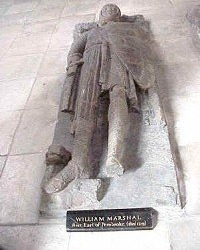
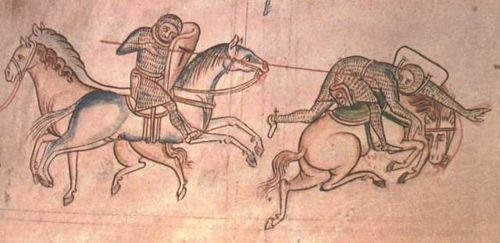
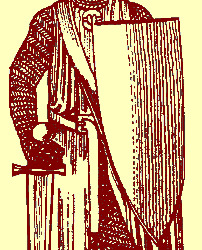

#Middle Ages#knights#chivalry#coat of arms#england#normandy#france#military history#Anglo-Norman#12th century#13th century#medieval#william marshal#henry ii#richard the lionheart#john i#henry iii#magna carta#crusades#knights templar
3 notes
·
View notes
Text

og somersault squad! i think it's a neat detail they've all got the same one-ish. (Poor Paul :P)
background painted over a photo by Lars Plougmann/CC-BY-SA-2.0
#tekken#anna williams#lee chaolan#marshall law#paul phoenix#once again some piece of media only mentions nyc when they're all clearly in jersey smh my head#yes i'm talking about paul's t2 stage#my art
112 notes
·
View notes
Text



“Laverne & Shirley” premiered on ABC on January 27, 1976
88 notes
·
View notes
Text
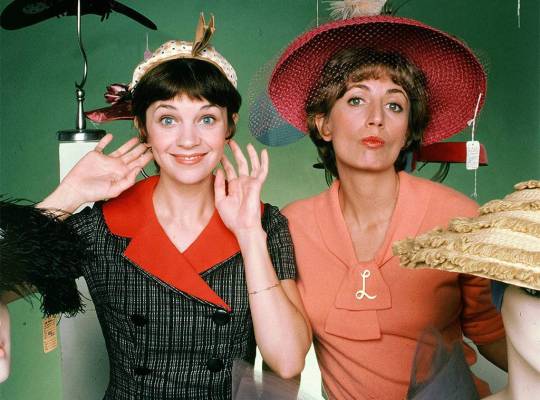
77 notes
·
View notes